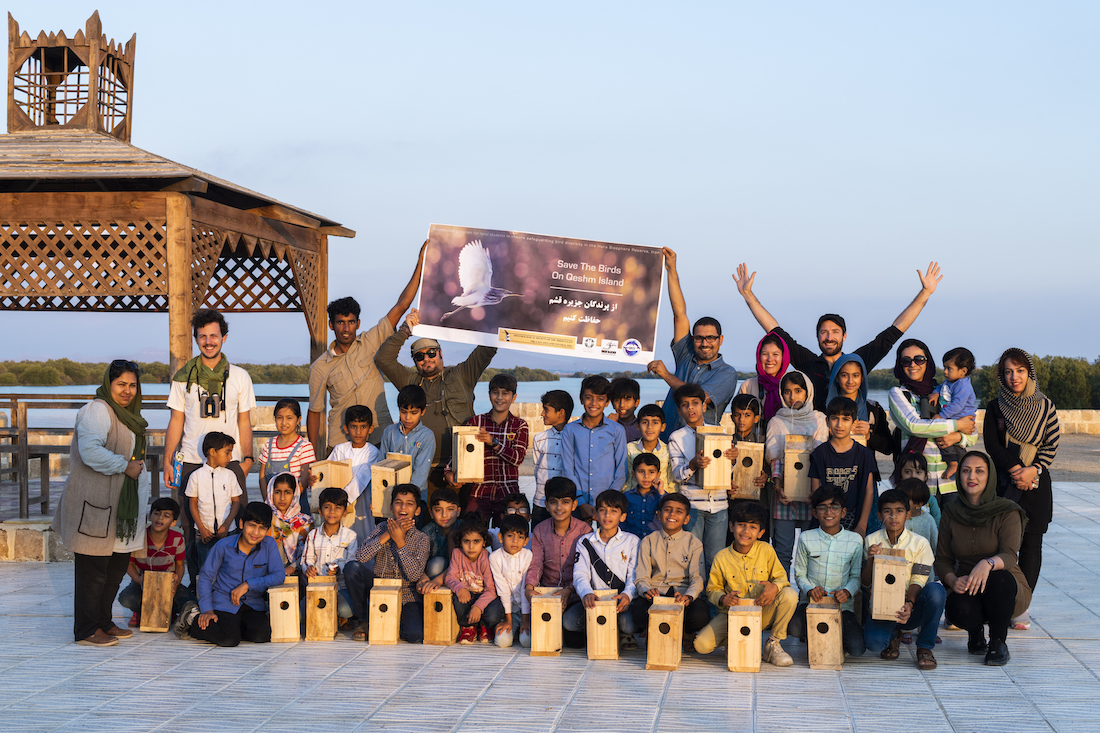Hara Biosphere Reserve, with an area of about 100,000 hectares, is known as the largest mangrove stand at the NW Indian Ocean. This vast mangrove wetland hosts more than 50 waterbird species, of which some such as the Eurasian Curlew (Numenius arquata) and Socotra Cormorant (Phalacrocorax nigrogularis) are categorized as threatened in the IUCN Red-list. Therefore, the wetland has been known as a Marine Important Bird Area (Marine IBA).
In the late December 2019, thanks to the financial support of Ornithological Society of the Middle East, and technical support of Hormozgan Province Department of Environment and Mashghe Afarinesh Education Institute, a one-week bird conservation educational program was held for local elementary school kids from villages lying at the southern margin of the biosphere reserve. The main goal of the program was to introduce the next generations to the values of bird diversity and the importance of bird conservation in the area.
About 120 kids from 6 villages participated in this project. The kids experienced birdwatching using binoculars. They also worked together to build woody nest-boxes for House Sparrows (Passer domesticus) and hung up the nests on the walls and trees of the villages. A few days after the program, we received photos from the parents showing the nests occupied by the sparrows. Respecting the vision of the 2019 World Migratory Bird Day, Be the Solution to Plastic Pollution, this program has been done without producing any plastic waste. Further, during a voluntary activity, kids and adults participated in the project involved in a plastic cleanup event and collected plastic debris from a tourism jetty near the wetland. The kids also enjoyed a group game named “migratory birds’ Journey”, which helped them to understand how anthropogenic activities can threaten the birds during their migrations.

